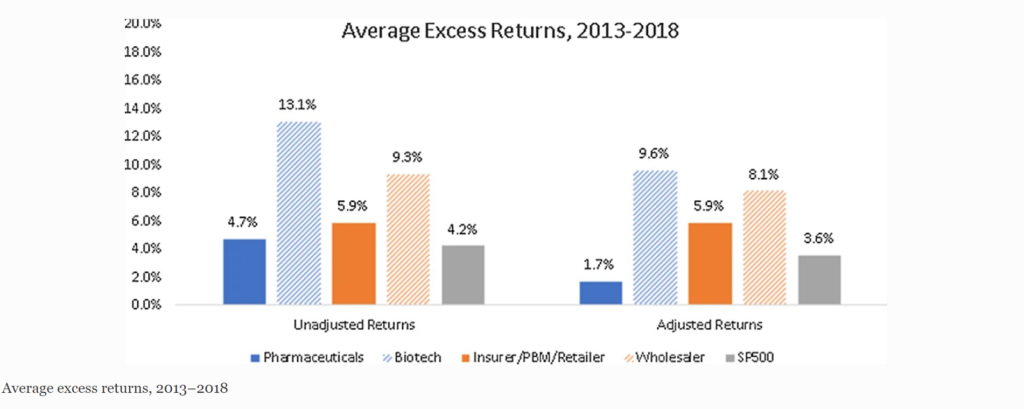Rising drug spending has led to increased calls to curtail drug costs. However, it is unclear where to target policy solutions. We estimated excess returns (the extent to which a firm’s profits are higher than expected given the risk associated with their investments) for manufacturers and middlemen in the pharmaceutical supply chain to determine who is making excessive profits. Excess returns were calculated as the difference between return on invested capital and the expected returns given risk, which is known as the weighted average cost of capital. We compared excess returns for manufacturers and middlemen to the average for S&P 500 companies. We find that both manufacturers and middlemen have higher excess returns in 2013–2018 compared with the S&P 500. However, if we treat research and development (R&D) as an investment rather than an expense, we find that excess returns for pharmaceutical manufacturers are lower than the S&P 500 (1.7% vs. 3.6%), but biotech manufacturers (9.6%), wholesalers (8.1%), and insurers/PBM/retailers (5.9%) continue to have significantly higher excess returns compared to the S&P 500. Our findings suggest public policies that promote competition in all areas of the pharmaceutical supply chain are important avenues for curtailing drug spending.
The full study can be found at the International Journal of Health Economics and Management.
